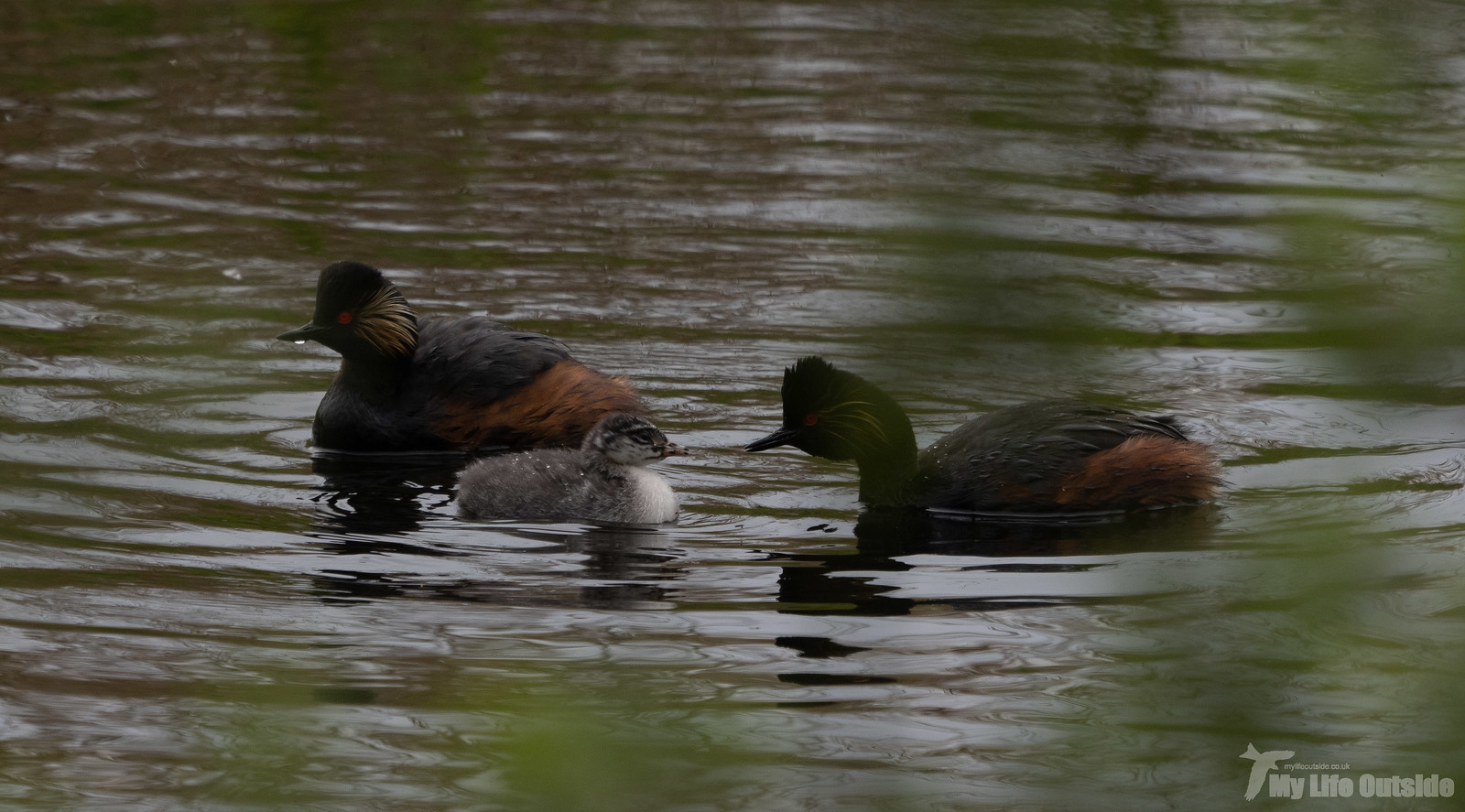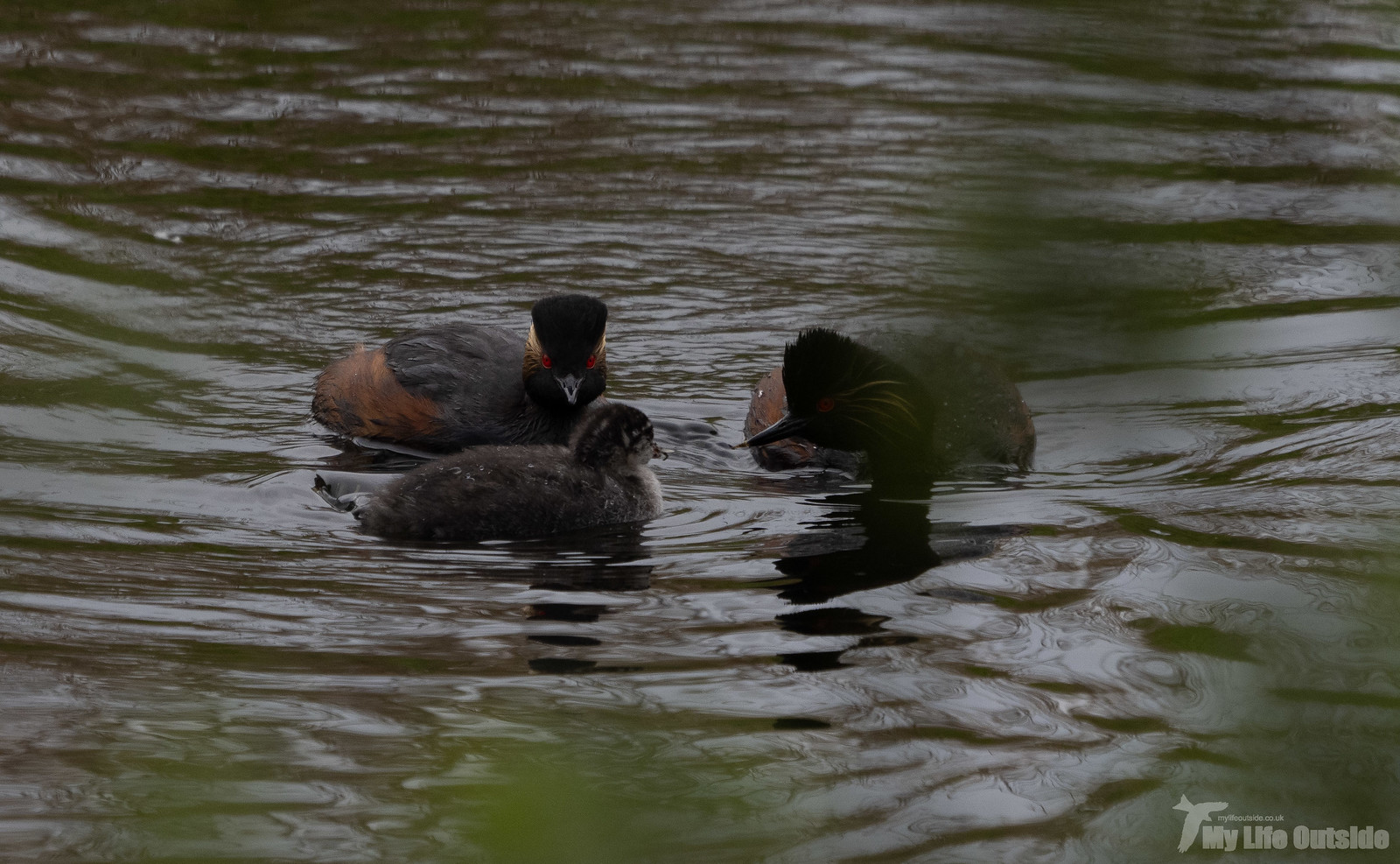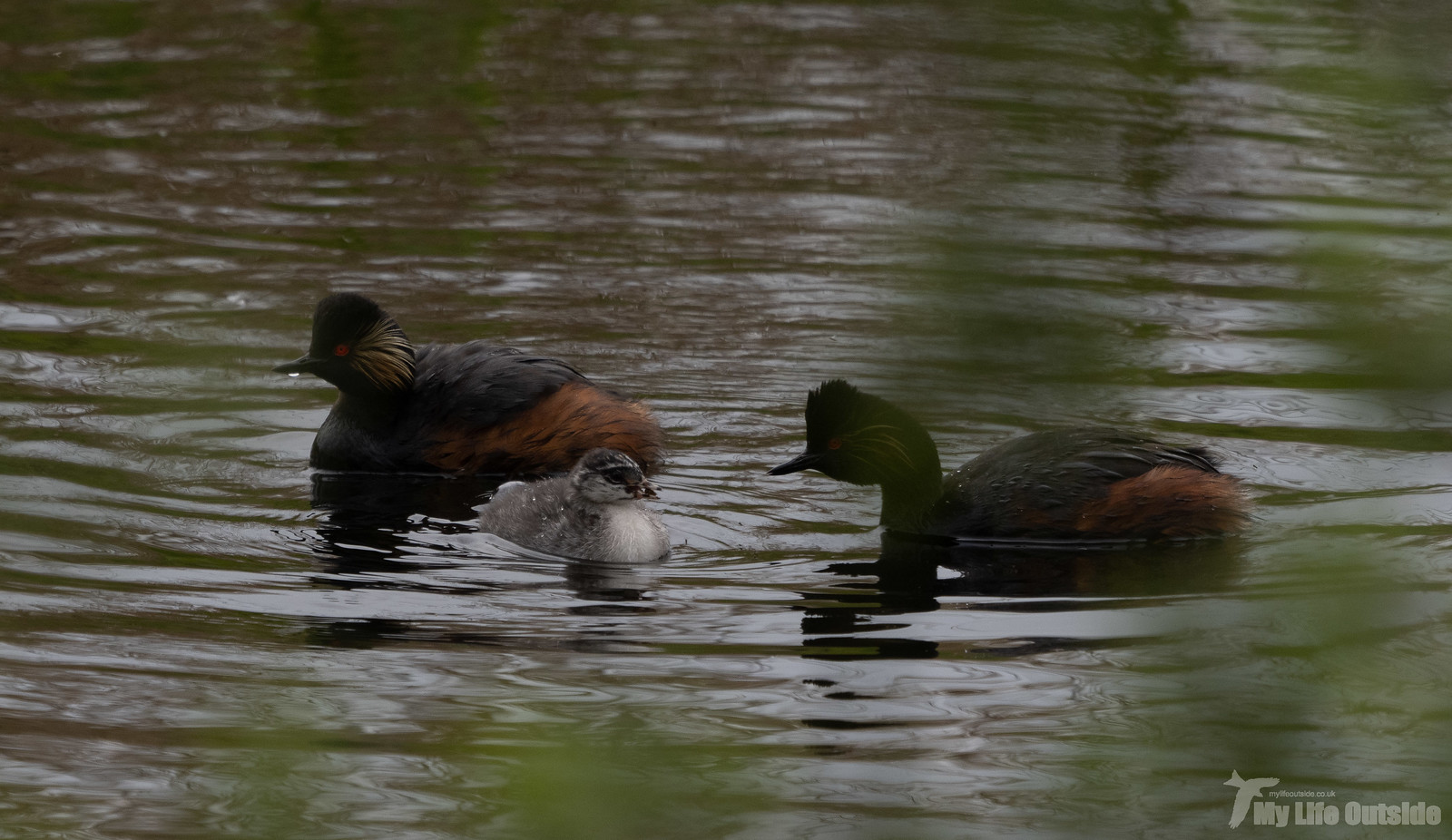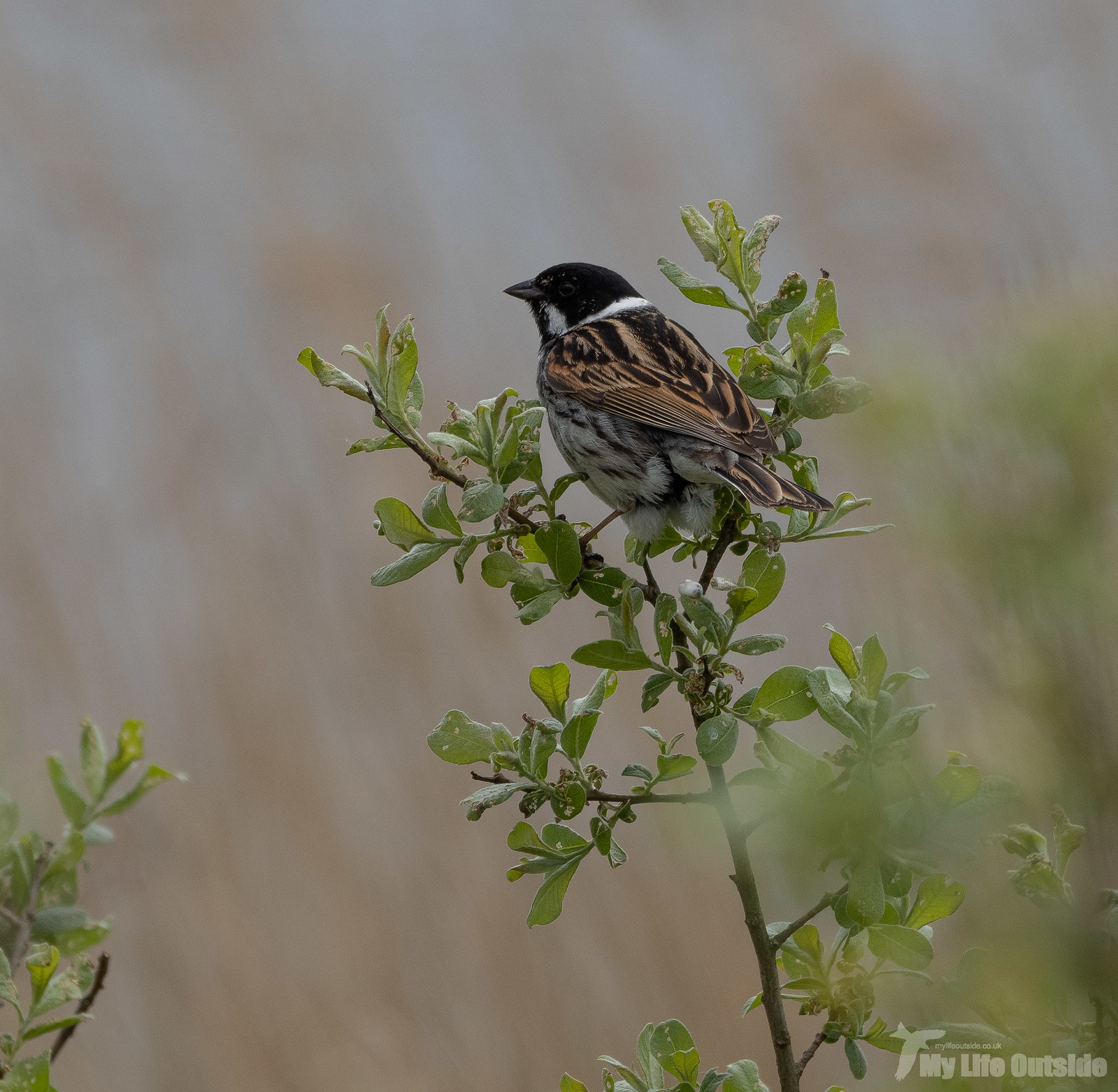Described by the RSPB themselves as “Yorkshire’s worst kept secret”, the presence of breeding Black-necked Grebes at the charity’s St Aidan’s reserve has been well known and publicised since 2018. The intervening years have seen some truly stunning images of these rare birds shared across social media bumping them even higher, as if that were possible, on my “must see” list.
Our opportunity finally came earlier this year and thanks to an incredibly helpful volunteer on site we were directed to two locations where the grebes had been spotted earlier that morning. At the first we initially drew a blank until an adult swam out from deep within the reeds, eventually giving fantastic if distant views. Even in poor light the combination of golden tuft, red eye and jet black head and neck were simply stunning, plumage of such intensity that comparisons with many of our other native species feels distinctly inadequate. Needless to say I was hooked and, with my first fix in the bag, went in search of more.
As luck would have it the same volunteer from earlier reappeared and enquired after our success, probably not expecting quite such a gushing reply in return. Clearly pleased he informed us that just around the corner a pair with chicks were showing well, information for which thanks were proffered as our feet were already in motion. And you know what? He was spot on.

What followed was more than I could have hoped for with both parents carrying chicks on their backs at times as well as plenty of interaction and feeding behaviour. To avoid disturbance we remained on the public footpath throughout, often with thick vegetation between us and the birds, but even so got some truly brilliant views. The only slight letdown was the light which to be honest could barely be called that weak as it was. Pushing my new camera system to its limits I was however able to come away with a few gratifying images which really capture the experience well.




After seeing such brilliant birds even the booming Bitterns I’m sorry to say had to take second billing, especially as they remained hidden throughout our stay. Still a fantastic, spine tingling sound though. Elsewhere the reserve was a heaving mass of life, more reminiscent of somewhere like the Farne Islands in terms of sheer density than what you’d expect to find a few miles outside Leeds city centre. Much of this comes courtesy of the gull colonies, Black Headed in particular, which are in fact the main reason for the Black-necked Grebe’s presence. By providing both an early warning alarm and defence mechanism the breeding success of the grebes is greatly increased. Undoubtedly similar benefits also explain the large numbers of Goslings dotted throughout.


Smaller birds were also well represented with both Reed and Sedge Warblers in fine voice whilst more wooded areas held good numbers of singing Blackcap, Chiffchaff and Willow Warbler. Reed Buntings too were numerous and on the whole a lot more confiding, as was a Kestrel found on freshly killed prey.


We called it a day in typical fashion with a biblical downpour and very British not-quite run back to the car. Nothing though could dampen the experience of finally seeing those Black-necked Grebes for ourselves. Well worth a visit if you ever get the chance.
Please note – Black-necked Grebes are a Schedule 1 species and are legally protected from disturbance whilst nesting or rearing young. Usually their location is not posted publicly but an exception has been made in this case as the birds presence has been widely shared by the RSPB and across the internet.



0 Comments